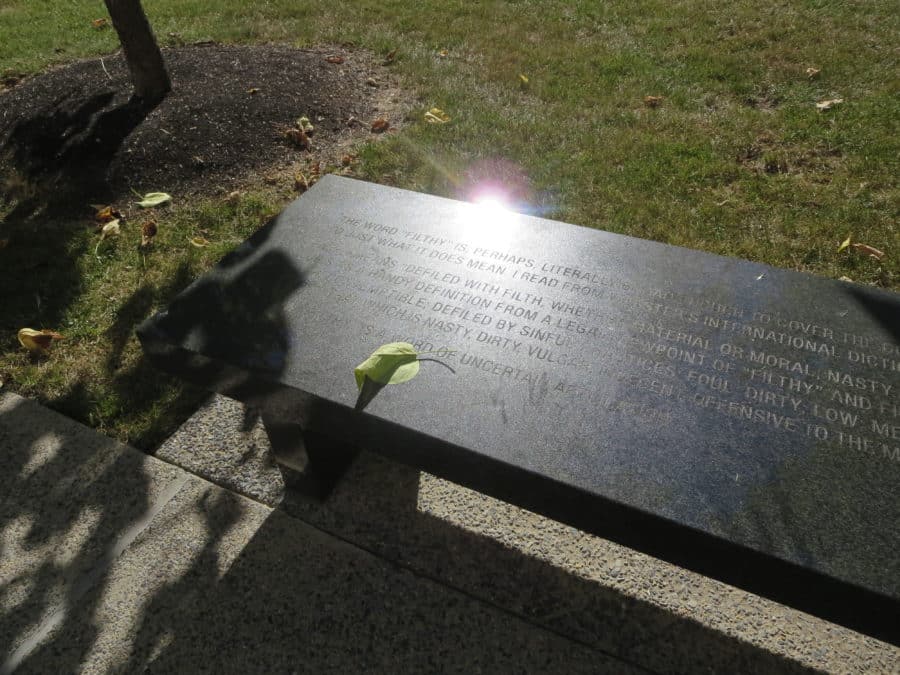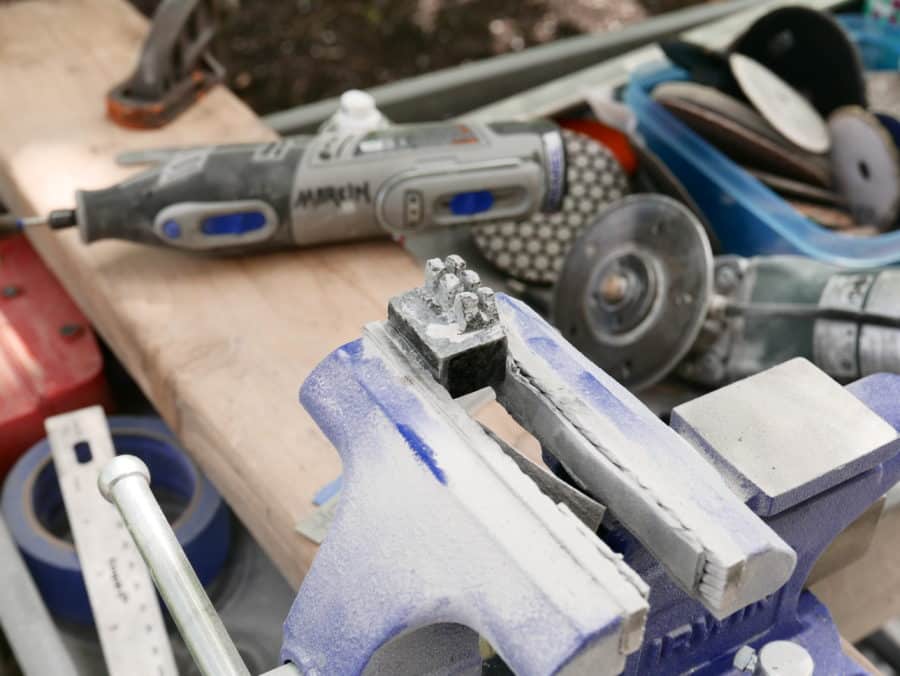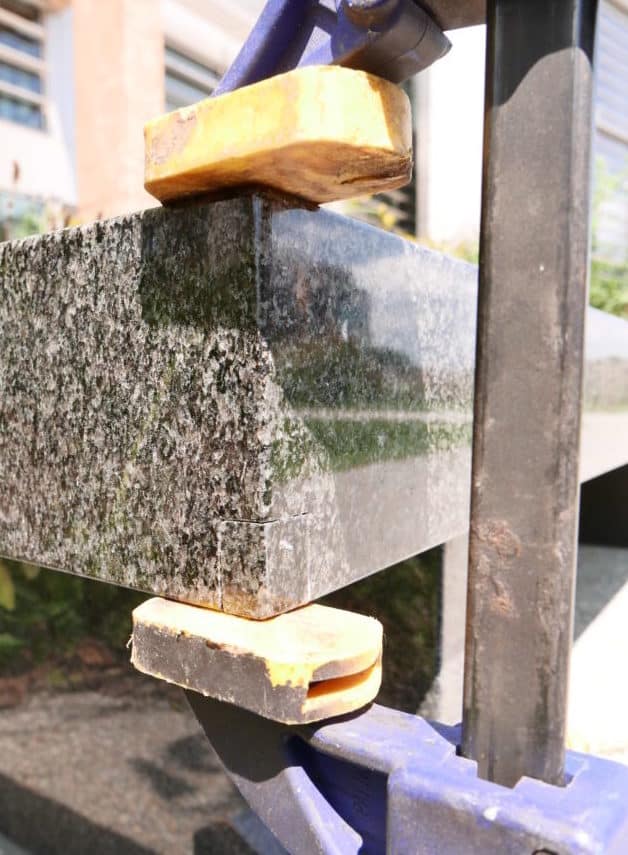Stone Conservation, Public Art Conservation, Granite Conservation:
 Marcin Pikus, Conservator of Stone Sculpture and Architectural Features, of McKay Lodge Conservation restored several granite benches as part of an installation by artist Jenny Holzer at the Food and Drug Adminstration (FDA) White Oak Campus in Silver Spring, Maryland. Jenny Holzer was born in Ohio in 1950, but her artwork has been installed and exhibited on an international scale. Her primary focus is the use of words in public spaces from poetry to surveys to arresting ideas which have been projected or inscribed onto surfaces including, but not limited to: buildings, human skin, illuminated electronic displays, and contraceptive packaging.
Marcin Pikus, Conservator of Stone Sculpture and Architectural Features, of McKay Lodge Conservation restored several granite benches as part of an installation by artist Jenny Holzer at the Food and Drug Adminstration (FDA) White Oak Campus in Silver Spring, Maryland. Jenny Holzer was born in Ohio in 1950, but her artwork has been installed and exhibited on an international scale. Her primary focus is the use of words in public spaces from poetry to surveys to arresting ideas which have been projected or inscribed onto surfaces including, but not limited to: buildings, human skin, illuminated electronic displays, and contraceptive packaging.
For the Jenny Holzer For the FDA, 2009, installation the artist’s message was inscribed in stone. The artwork consists of a large rectangular table with four benches as well as fifteen path benches along a sidewalk outside of the FDA White Oak Campus. The benches and table are made from polished slabs of black Impala granite.

Want to know what the Holzer benches say? Looks like you will have to go to Silver Spring and take a seat, but we will tell you about the stone conservation treatment of For the FDA here.
A few of the benches had damaged or missing corners which interrupted the original aesthetic of the piece. For the granite conservation treatment, Conservator Marcin Pikus performed Dutchman repairs for the damaged corners on two different benches. A stone Dutchman repair is a traditional method which requires a great deal of skill; it involves removing the original damaged material and replacing it with new material. If executed correctly, the repair will appear seamless.
 Slabs of Impala black granite were purchased from the Rock of Ages quarry in Vermont, the original fabricator of the Holzer artwork, to ensure the new material would match the existing benches. The stone can also be used for future repairs if needed.
Slabs of Impala black granite were purchased from the Rock of Ages quarry in Vermont, the original fabricator of the Holzer artwork, to ensure the new material would match the existing benches. The stone can also be used for future repairs if needed.
For the current granite conservation treatment, damaged areas were first carefully cut and removed, creating a geometric vacancy in the base material. Second, an insert was then cut and keyed from the newly purchased slabs. The inserts were closely trimmed to fit into the vacancy, and set into place.

A former repair on another bench corner also needed to be removed. There were losses of the stone as well as failed adhesive visible around the area. Previous adhesive was softened with solvent to loosen the repaired corner. Once it was removed, excess adhesive residue was reduced with a scalpel, and the uneven break surface was slightly abraded with a microgrinder. Grinding eliminated any areas which would cause misalignment of the new repair. The corner was reattached with a high-quality epoxy and losses were filled with a custom blended adhesive bulked with pigment and black granite dust.
